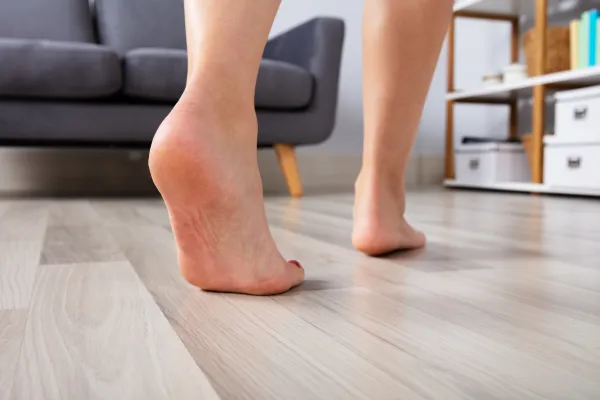
Creating a Safe Haven for Your Feet: Environmental Factors in Diabetic Foot Assessments
At Peak Podiatry Clinic, we understand that diabetes can significantly impact your foot health. That's why we prioritise comprehensive diabetic foot assessments, going beyond just the physical exam. We consider a crucial element: your home environment.
Why is My Home Environment Important?
Diabetics are more susceptible to foot ulcers and infections due to reduced blood flow and nerve damage. A safe home environment minimises fall risks and creates a space that promotes good foot health.
Optimising Your Home for Diabetic Feet:
Lighting: Ensure bright lighting throughout your home, especially in hallways, bathrooms, and near stairs. This helps you see potential hazards like uneven surfaces or loose rugs.
Flooring: Choose non-slip flooring with good traction. Go for low-pile carpets or rugs with secure edges to prevent tripping.
Furniture: Arrange furniture to allow for ample walking space. Remove clutter and ensure furniture is stable to avoid accidental bumps.
Stairs: Install handrails on both sides of your staircase. Consider adding non-slip treads for increased grip.
Bathroom: Install grab bars in the shower and near the toilet for added stability. Choose a shower chair to minimise standing time.
Footwear Essentials for Diabetic Feet:
Proper Fit: Ill-fitting shoes can cause blisters and pressure points. Visit our clinic for expert advice on shoe selection and to ensure a comfortable, snug fit.
Supportive Design: Choose shoes with good arch support and a wide toe box to accommodate any swelling.
Breathable Materials: Opt for shoes made from breathable materials like leather or mesh to prevent moisture buildup and potential infections.
Regular Inspections: Daily inspect your shoes for any tears, loose objects, or worn-out soles that could increase fall risks.
Maintaining Healthy Feet at Home:
Daily Foot Checks: Look for any cuts, blisters, redness, or swelling. Report any concerns to our podiatrists promptly.
Washing and Moisturising: Wash your feet daily with warm water and mild soap. Dry them thoroughly, especially between the toes. Apply a moisturiser suitable for diabetics to prevent dryness and cracking.
Regular Foot Care Appointments: Schedule regular appointments at Peak Podiatry for comprehensive diabetic foot assessments. This allows for early detection and treatment of any potential issues.
Creating a safe home environment and prioritising proper foot care are crucial for diabetic foot health. At Peak Podiatry Clinic, we're here to guide you every step of the way. Schedule your diabetic foot assessment today, and let us help you create a haven for your feet!
Please note: This blog post provides general information. Always consult with our podiatrists for personalised recommendations regarding your specific needs.
Ask Robert And His Team
Fill in the form to request a Call From Our Team
Fill in the form to request a Call From Our Team
One of our team will call you for FREE and answer any questions or concerns you may have about your Foot Pain.
One of our team will call you for FREE and answer any questions or concerns you may have about your Foot Pain.
© Copyright 2022. Peak Podiatry All rights reserved.





